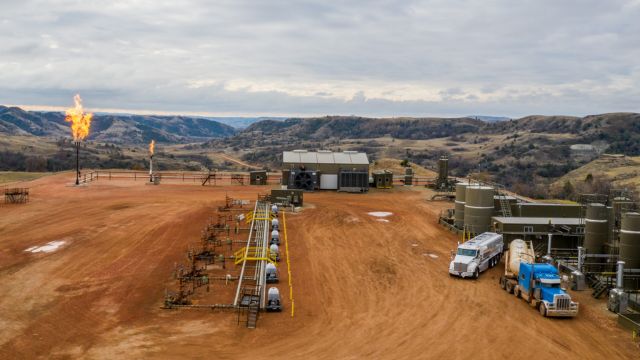In a significant policy shift, the Biden administration announced on Friday the finalization of new regulations that will impose higher fees on oil and gas companies operating on federal lands. This move is part of a broader effort to enhance the financial returns from federal oil and gas development and to mitigate environmental damage caused by these activities.
The reforms, driven by the Interior Department’s Bureau of Land Management (BLM), also seek to address long-standing concerns voiced by environmental and taxpayer advocacy groups regarding the adequacy of public benefits from such developments.
These changes stem from provisions in the landmark 2022 Inflation Reduction Act (IRA), a critical piece of President Joe Biden’s climate change legislation.
Among the notable adjustments are increased bonding rates required from companies to ensure the proper closure of abandoned oil and gas wells, along with higher lease rents, minimum bids at auctions, and royalty rates for extracted fuels. Additionally, the new rules will restrict drilling activities in areas designated as sensitive to wildlife and cultural heritage.
Interior Secretary Deb Haaland highlighted the significance of these reforms, noting that they represent the most substantial overhaul of the federal oil and gas leasing program in decades. “These changes will reduce wasteful speculation, boost public financial returns, and protect taxpayers from the burdens of environmental cleanup costs,” Haaland stated.
Despite these advancements, the American Petroleum Institute (API) has expressed concerns that the increased operational costs could threaten domestic energy supplies by making federal lands less competitive compared to foreign sources. Holly Hopkins, API’s Vice President of Upstream Policy, cautioned that stringent regulations could jeopardize this vital energy reserve.
The policy adjustments align with promises made by President Biden during his 2020 campaign to curtail federal oil and gas leasing as part of his broader climate change agenda. However, the IRA also ensured that drilling rights auctions would continue on federal lands for at least another decade, reflecting concessions made to the influential fossil fuel industry.
Environmental groups and taxpayer advocates have generally welcomed the reforms, praising them for their potential to reduce speculative practices and hold companies accountable for environmental stewardship. Nevertheless, some activists, like Nicole Ghio from Friends of the Earth, argue that the new rules do not adequately tackle the broader climate impacts associated with fossil fuel extraction on public lands.
Under the updated regulations, minimum lease bonds will see a substantial increase from $10,000 to $150,000, a figure that has remained unchanged since 1960.
Additionally, royalty rates will rise to 16.67% from the previous 12.5%, and the minimum bid per acre at oil and gas auctions will escalate from $2 to $10. The rental rate for a 10-year lease will double to $3 per acre for the initial two years and increase to $15 per acre in the latter years, with provisions to adjust these fees for inflation after a decade.
These reforms mark a pivotal moment in U.S. energy policy, reflecting a strategic shift towards greater regulatory oversight of natural resource extraction, while balancing economic, environmental, and public health priorities.

